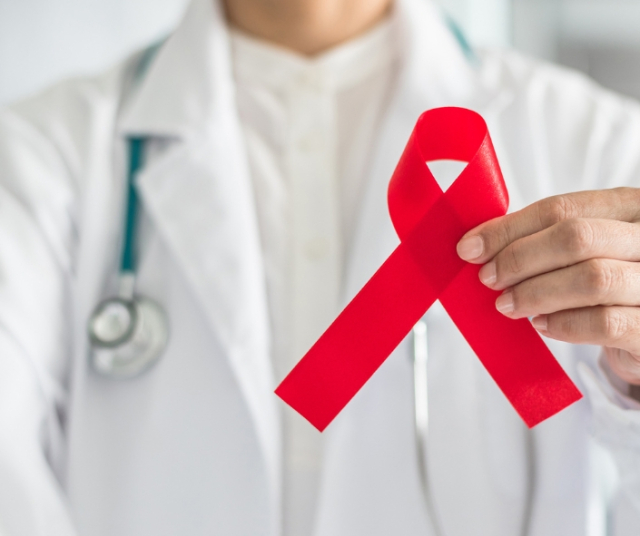World AIDS Day is celebrated annually on December 1 around the world. This date provides a platform to raise awareness about HIV/AIDS , show solidarity with people living with the virus, and remember those who have lost their lives to this disease. In the case of Peru, this day takes on special importance, as the country has been working hard to address the challenges associated with HIV/AIDS, improve prevention and treatment, and reduce stigma and discrimination.
The HIV/AIDS Situation in Peru
HIV/AIDS ( Human Immunodeficiency Virus/Acquired Immune Deficiency Syndrome ) is a global epidemic that has affected millions of people around the world. In the context of Peru, this disease has had a significant impact on public health and has led to the implementation of various strategies to prevent the spread of the virus, provide medical care and support to those affected, and reduce the associated stigma. A more detailed analysis of the HIV/AIDS situation in Peru is presented below.
Epidemiology and Statistics
According to data from the Peruvian Ministry of Health, it is estimated that around 71,000 people are living with HIV in the country. Although this figure may seem relatively low compared to other countries, it is important to note that HIV/AIDS remains a significant concern in Peru, especially given disparities in the prevalence of the virus in different populations.
HIV disproportionately affects certain population groups in Peru. For example, men who have sex with men (MSM), transgender people, sex workers, and people who inject drugs are considered key populations in the transmission of the virus. These populations face a series of social, economic, and cultural barriers that can hinder access to health services and the adoption of preventive behaviors.
Risk Factors and Transmission
Risk factors for HIV transmission in Peru are diverse and are influenced by a series of structural and social factors. Injection drug use, sex work, and lack of comprehensive sex education are some of the factors that contribute to the spread of the virus. Lack of access to adequate health services and accurate information has also been a major challenge in HIV prevention and control.
HIV transmission can occur through unprotected sex, the sharing of contaminated needles and syringes, and from mother to child during pregnancy, childbirth, or breastfeeding. Promotion of condom use, implementation of syringe exchange programs and HIV testing are key strategies to reduce transmission.
Access to Treatment and Medical Care
Despite the challenges, Peru has made significant progress in improving access to treatment and medical care for people living with HIV. The country has comprehensive care programs that offer high-quality antiretroviral therapy (ART), which has given people with HIV the opportunity to lead healthy and productive lives. ART not only improves the quality of life of affected people, but also reduces the transmission of the virus by lowering the viral load in the body.
Stigma and Discrimination
Stigma and discrimination associated with HIV/AIDS remain a major obstacle in Peru. Negative attitudes towards people with HIV can make it difficult to seek care and adhere to treatment. Furthermore, stigma can lead to social exclusion and marginalization of affected people, which in turn can increase the risk of transmission of the virus.
Education and awareness are essential to address stigma and discrimination. Public information campaigns, training of health professionals and promotion of human rights are important strategies to change attitudes and reduce stigma in society.
Advances in Prevention and Treatment
One of the fundamental pillars in the fight against HIV/AIDS is prevention. In Peru, education and awareness programs have been implemented to inform the population on how to prevent the transmission of the virus. Millions of condoms have been distributed across the country and efforts have been made to reach vulnerable populations such as sex workers and people who inject drugs. In addition, access to antiretroviral treatment (ART) has improved significantly in Peru. People living with HIV can access quality medicines that allow them to lead healthy and productive lives. Advances in medical care have helped reduce AIDS-related mortality rates in the country.
Persistent Challenges
Despite the advances, Peru still faces significant challenges in the fight against HIV/AIDS. One of the most pressing issues is the stigma and discrimination associated with the disease. Negative attitudes towards people with HIV can hinder care-seeking and treatment adherence. In addition, certain populations, such as men who have sex with men, transgender people, and sex workers, remain especially vulnerable to HIV due to social, economic, and cultural factors.
Lack of awareness and education is also a major obstacle. Despite prevention efforts, there are still misunderstandings and misinformation about how HIV is transmitted and how it can be prevented. Continuing education and awareness campaigns are essential to address these knowledge gaps and promote safe behaviours.
Ongoing and Future Commitment
The fight against HIV/AIDS in Peru requires the continued commitment and collaboration of multiple actors, including the government, non-governmental organizations, the health sector, and society as a whole. It is essential to continue expanding access to treatment, improving education and awareness, and addressing health disparities that affect the most vulnerable populations.
Investments in research also play a crucial role in the fight against HIV/AIDS. The search for new therapies, prevention methods and an eventual cure continues to be an important objective for the scientific and medical community.
